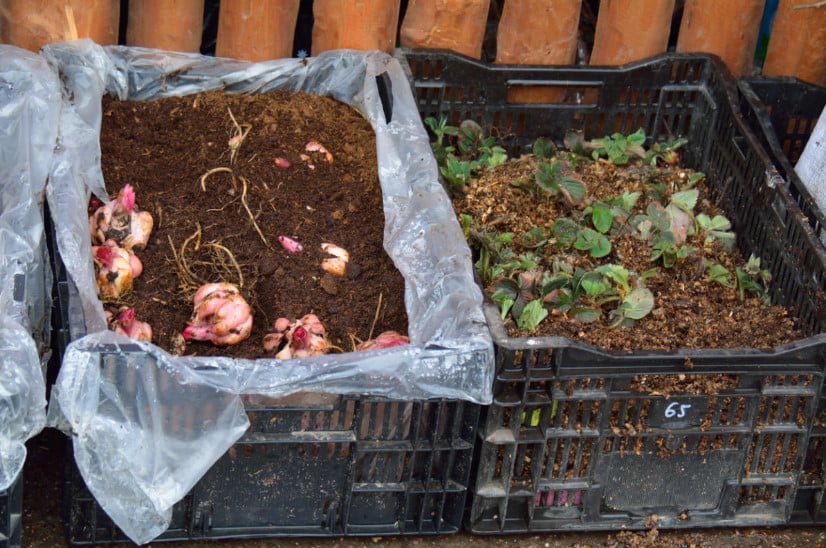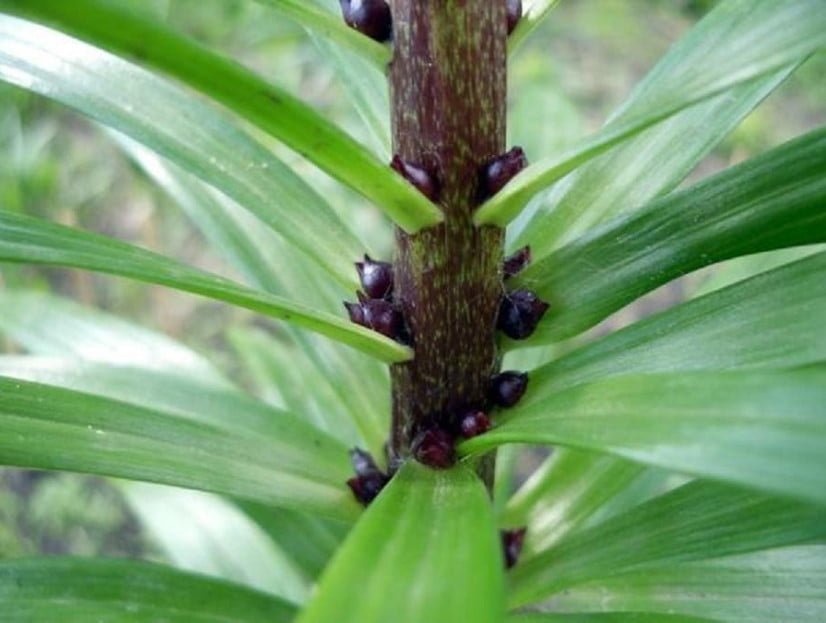
July is the time when lilies bloom. Admiring them, gardeners often dream of reproducing their favorite variety – there is not much beauty. It is not difficult to realize this dream, there is not even one way.
After observing the plant you like, you can easily choose a method of reproduction that will be more efficient, more convenient and easier for a particular variety. And if in doubt, you can try everything.
Reproduction of lilies by subsidiaries bulbs
Perhaps the simplest and most common way. Everything is simple here: dig out the bush after flowering, carefully separate the small bulbs and plant them in a new place. If the kids are very small, it is better to plant them for upbringing on a separate bed or in containers — they can “get lost” in the flower garden.

It is advisable to plant bulbs immediately after separation from the parent plant — in the air they wither very quickly, become flabby. Lilies grown from babies usually bloom in the second year, although large bulbs can please with a flower in the first summer.
The method is universal. But it has one drawback: not all types and varieties of lilies actively form daughter bulbs — there are those who have 1-2 babies at best during the season. To determine how suitable this option is for the lily you have chosen, you can even without digging: if a young growth appeared at the base of the stem the next year after planting, it is the daughter bulbs that germinate. The more such shoots, the faster you will be able to reproduce the flower.
Reproduction of lilies by dividing the nest
It differs slightly from the previous method. A large lily bulb can be divided, forming 2-3 full-fledged (although not particularly large) bulbs that will bloom next year. After 2-3 years, the nest becomes quite extensive, and it can be divided.

In general, the method is universal. But it should be borne in mind that the active division of bulbs is not typical for all varieties. If a lily planted a year later pleased you with not one, but two or three stems-peduncles, and a year later turned into a large flowering bush – it can be successfully propagated by division.
The overgrown nests are dug out after flowering, the bulbs are carefully separated and planted in a new place. Next summer, these lilies will bloom.
Reproduction of lilies by scales
This method can also be attributed to universal – many species and varieties of lilies form bulbs on scales. But its effectiveness depends on the specific plant. So, from my experience, I can say that Asian hybrids reproduce much better by this method than Oriental ones.

The plants obtained from these children will bloom only after 3-5 years, but from one bulb you can get a lot of planting material – on the same scale from 1 to 4 “offspring”.
Please note that the bulbs obtained from flakes are very small. They need to be grown on a special bed or in containers. You can use this method of reproduction at any time — there would be a suitable bulb at hand.
Reproduction of lilies by air bulb
This method is suitable for those lilies that form bud bulbs in the leaf axils.

When they mature, they easily separate from the stem, and when they fall to the ground, they take root. Therefore, bulbous lilies often propagate this kind of self-seeding. The collected bulbs are sown directly in the open ground (preferably on a seedling bed) or in containers. Well-developed bulbs are formed after 2-3 years.
Reproduction of lilies by seeds
This is the most time-consuming method; it is suitable mainly for lily species. If you want to experiment on your own, keep in mind that not all varietal characteristics are possible during seed propagation. But freshly harvested seeds germinate better than purchased ones. It should be borne in mind that the germination rate of seeds is different. Asian lilies are also in the lead here; curly lily seeds germinate the longest.
Lily seeds are collected when the boxes are browned. Sown in a moist peat substrate or vermiculite and kept in the refrigerator until germination, and then planted in pots. It will take 5-8 years to wait for the result, because this troublesome method is not very popular, but it is still useful to know about this possibility.
How do you propagate lilies? Which method do you prefer and why?




Leave a Reply